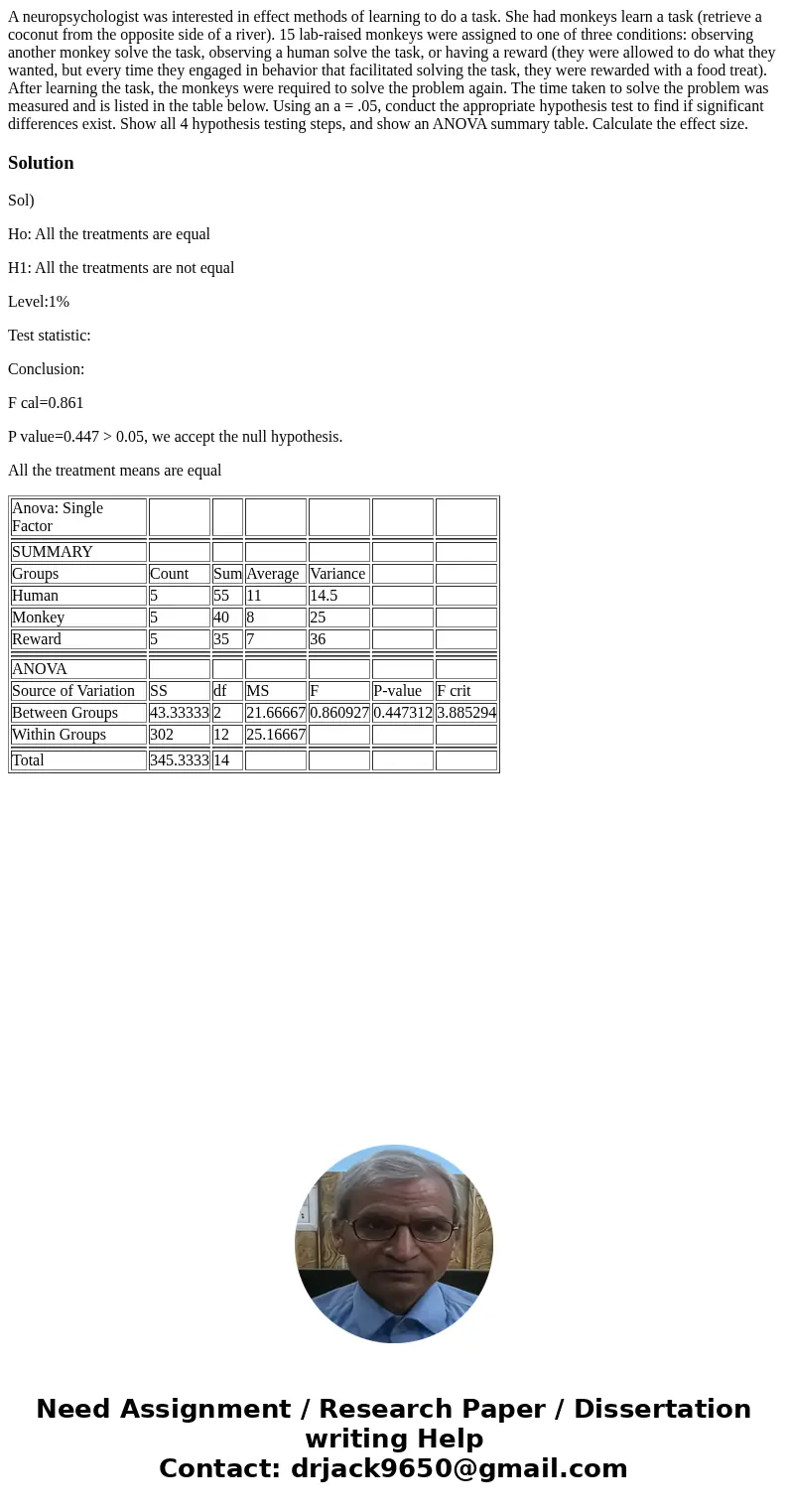A neuropsychologist was interested in effect methods of lear
A neuropsychologist was interested in effect methods of learning to do a task. She had monkeys learn a task (retrieve a coconut from the opposite side of a river). 15 lab-raised monkeys were assigned to one of three conditions: observing another monkey solve the task, observing a human solve the task, or having a reward (they were allowed to do what they wanted, but every time they engaged in behavior that facilitated solving the task, they were rewarded with a food treat). After learning the task, the monkeys were required to solve the problem again. The time taken to solve the problem was measured and is listed in the table below. Using an a = .05, conduct the appropriate hypothesis test to find if significant differences exist. Show all 4 hypothesis testing steps, and show an ANOVA summary table. Calculate the effect size.

Solution
Sol)
Ho: All the treatments are equal
H1: All the treatments are not equal
Level:1%
Test statistic:
Conclusion:
F cal=0.861
P value=0.447 > 0.05, we accept the null hypothesis.
All the treatment means are equal
| Anova: Single Factor | ||||||
| SUMMARY | ||||||
| Groups | Count | Sum | Average | Variance | ||
| Human | 5 | 55 | 11 | 14.5 | ||
| Monkey | 5 | 40 | 8 | 25 | ||
| Reward | 5 | 35 | 7 | 36 | ||
| ANOVA | ||||||
| Source of Variation | SS | df | MS | F | P-value | F crit |
| Between Groups | 43.33333 | 2 | 21.66667 | 0.860927 | 0.447312 | 3.885294 |
| Within Groups | 302 | 12 | 25.16667 | |||
| Total | 345.3333 | 14 |

 Homework Sourse
Homework Sourse